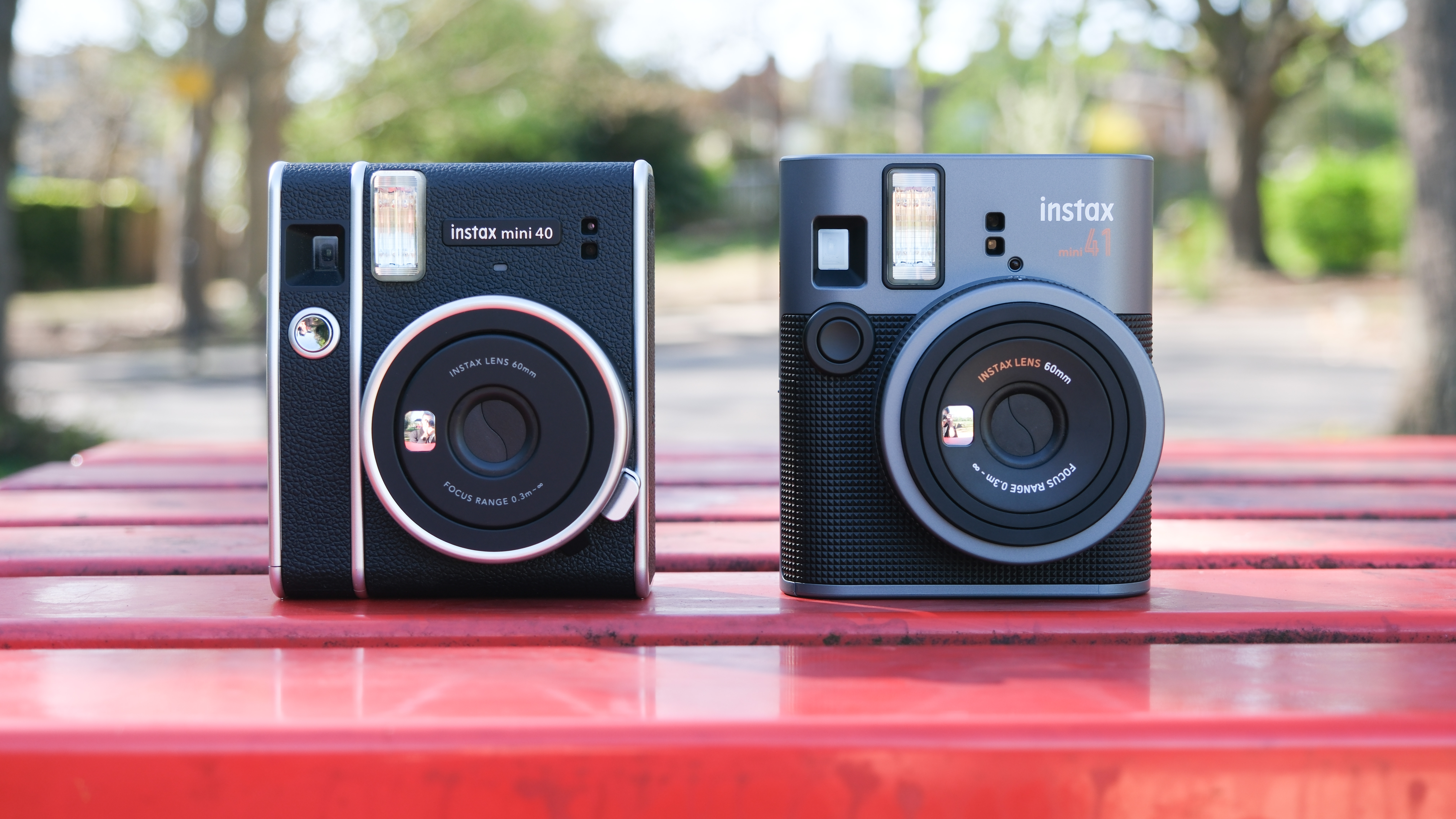The best L-mount lenses: check out these best buys for your Panasonic, Sigma or Leica mirrorless camera
Team players Leica, Panasonic and Sigma formed the L-mount Alliance back in 2018, giving rise to a fabulous line-up of lenses. Here’s our pick of the crop...

It’s nice to share, especially if you’ve got the likes of Leica, Panasonic and Sigma in your corner. One of my biggest bugbears with interchangeable lens cameras is that, if I want to swap to a different make of camera body, I’ve generally got to change all of my lenses as well. It makes a refreshing change that full-frame cameras from different manufacturers, including the likes of the highly acclaimed Panasonic LUMIX S1R and Panasonic Lumix S5 II, the compact and quirky Sigma fp L and the exotic Leica SL3 (as well as the stablemates of all these camera bodies) use exactly the same mount.
The L-mount standard has its roots in Leica’s T-mount system, kicking off with the Leica T (Typ 701) APS-C format digital camera back in 2014. It grew into the L-mount with the subsequent launch of the Leica SL full-frame camera, with sub-categories of TL for APS-C format lenses and SL for full-frame. As is often the case, you can shoot with full-frame compatible lenses on APS-C bodies and get a 1.5x focal length multiplier (crop factor), and shoot with APS-C format lenses on full-frame cameras, which automatically switch to APS-C crop mode.
Advantages of the L-mount specification for maximizing image quality and all-round performance include a wide 51.5mm diameter mounting flange and a short 20mm proximity to the camera-s image sensor. Naturally, with Leica, Panasonic and Sigma all designing and making L-mount lenses over the last few years, there are plenty to choose from. Sigma in particular has launched most of its recent lenses in dual formats, with Sony E-mount versions of the same lenses also being available. In this guide, I’m handpicking the finest lenses for L-mount cameras, in all major categories for different types of photography, based on our own lab tests, real-world testing and subsequent reviews.

Matthew Richards is a photographer and journalist who has spent years using and reviewing all manner of photo gear. He is Digital Camera World's principal printer reviewer – and has tested all the printers on this list. His expertise with equipment doesn’t end there, though. He is also an encyclopedia when it comes to all manner of cameras, camera holsters and bags, flashguns, tripods and heads, printers, papers, and inks, and just about anything imaging-related.
The Quick List
Here's a quick rundown of all the lenses in this guide. Scroll down for a more in-depth look at the individual products.
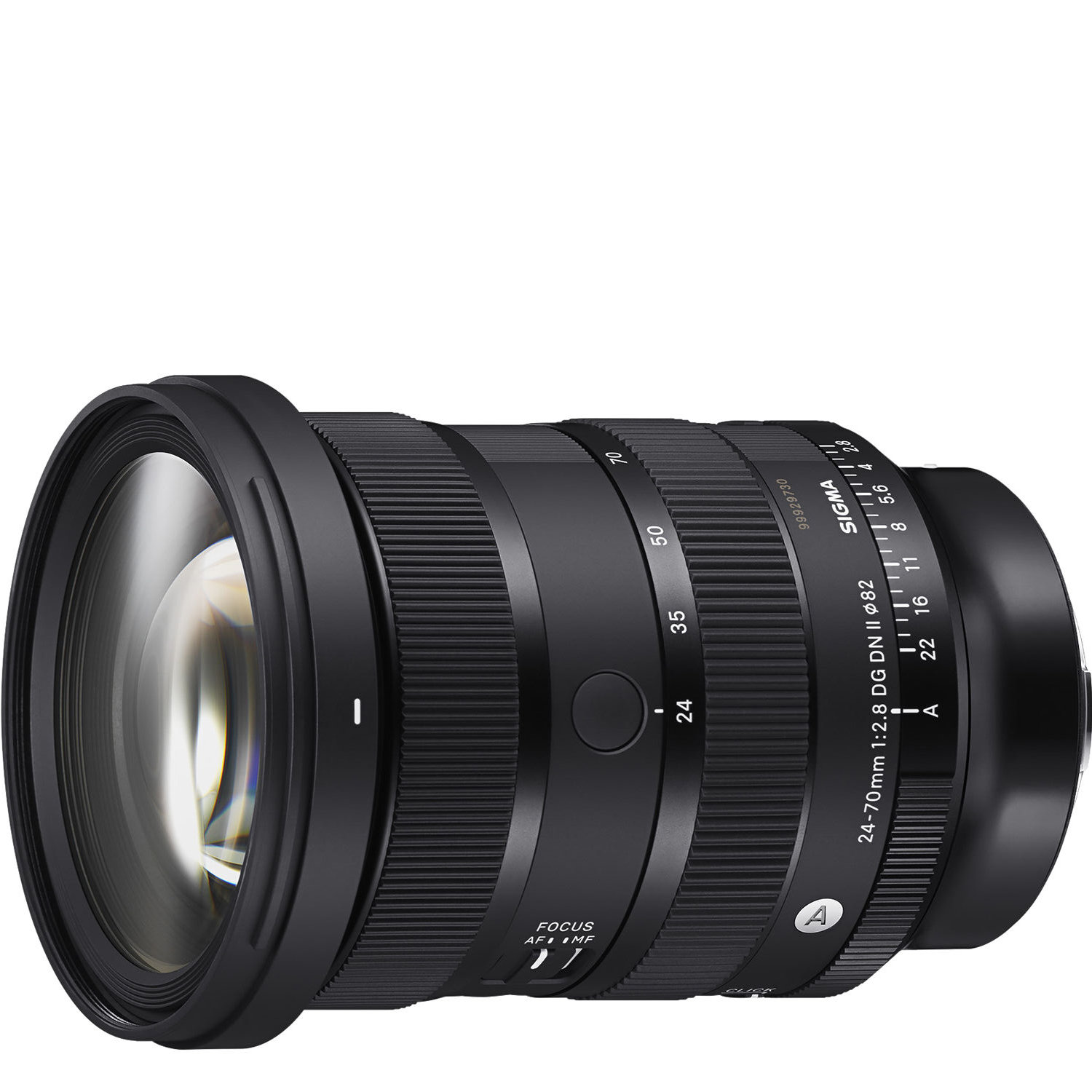
I’ve long been a fan of Sigma’s 24-70mm Art lenses and this latest edition boasts upgraded image quality and autofocus speed, while adding useful handling extras. It’s also lighter in weight than its predecessors. The Mark II is simply the best yet and is competitively priced, making it a standout winner.
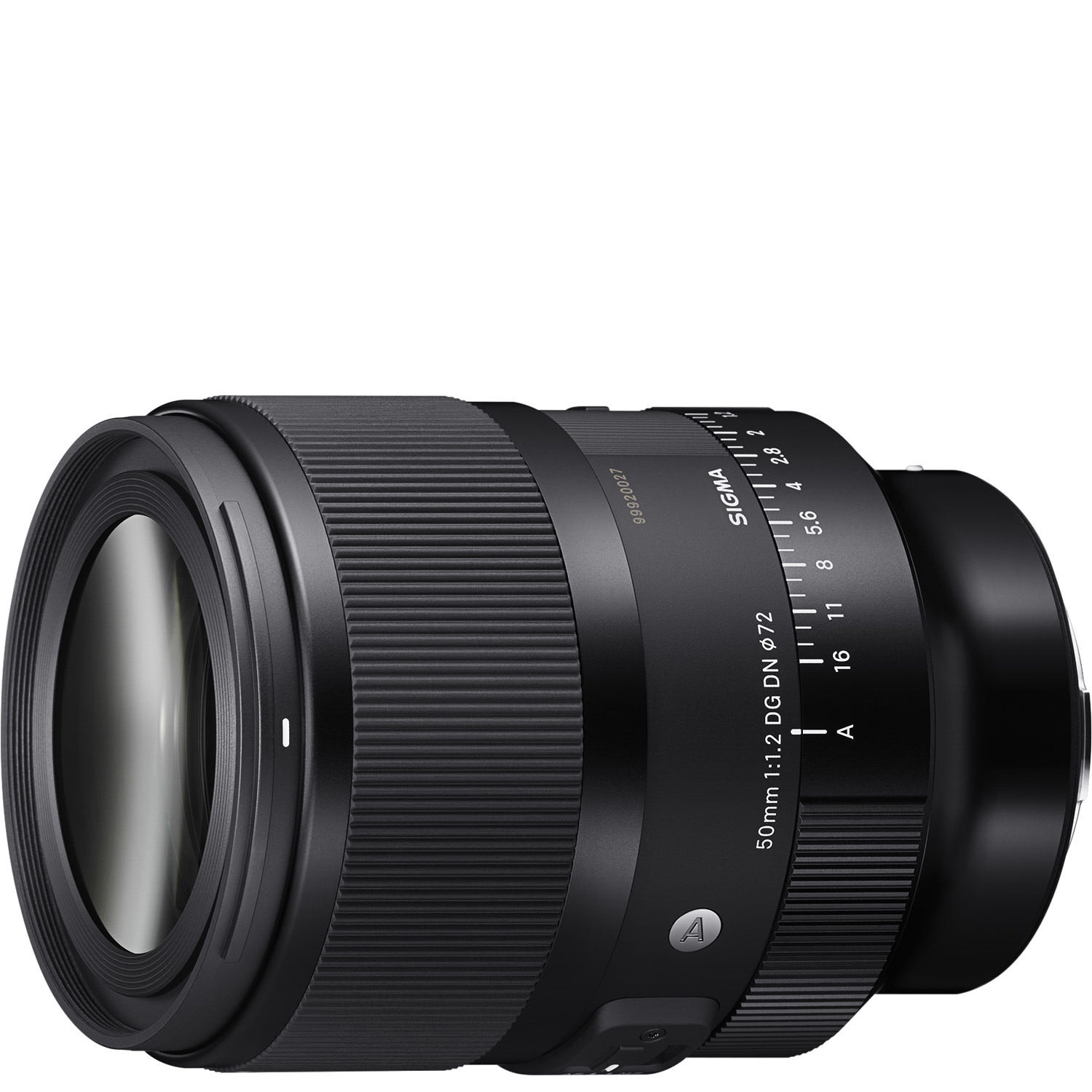
There’s fast, and then there’s super-fast. For me, the killer feature of this nifty fifty is its f/1.2 aperture, enabling a really tight depth of field when I want one, and fast shutter speeds for freezing motion even under very low lighting levels. Image quality is sublime and build quality is really solid.
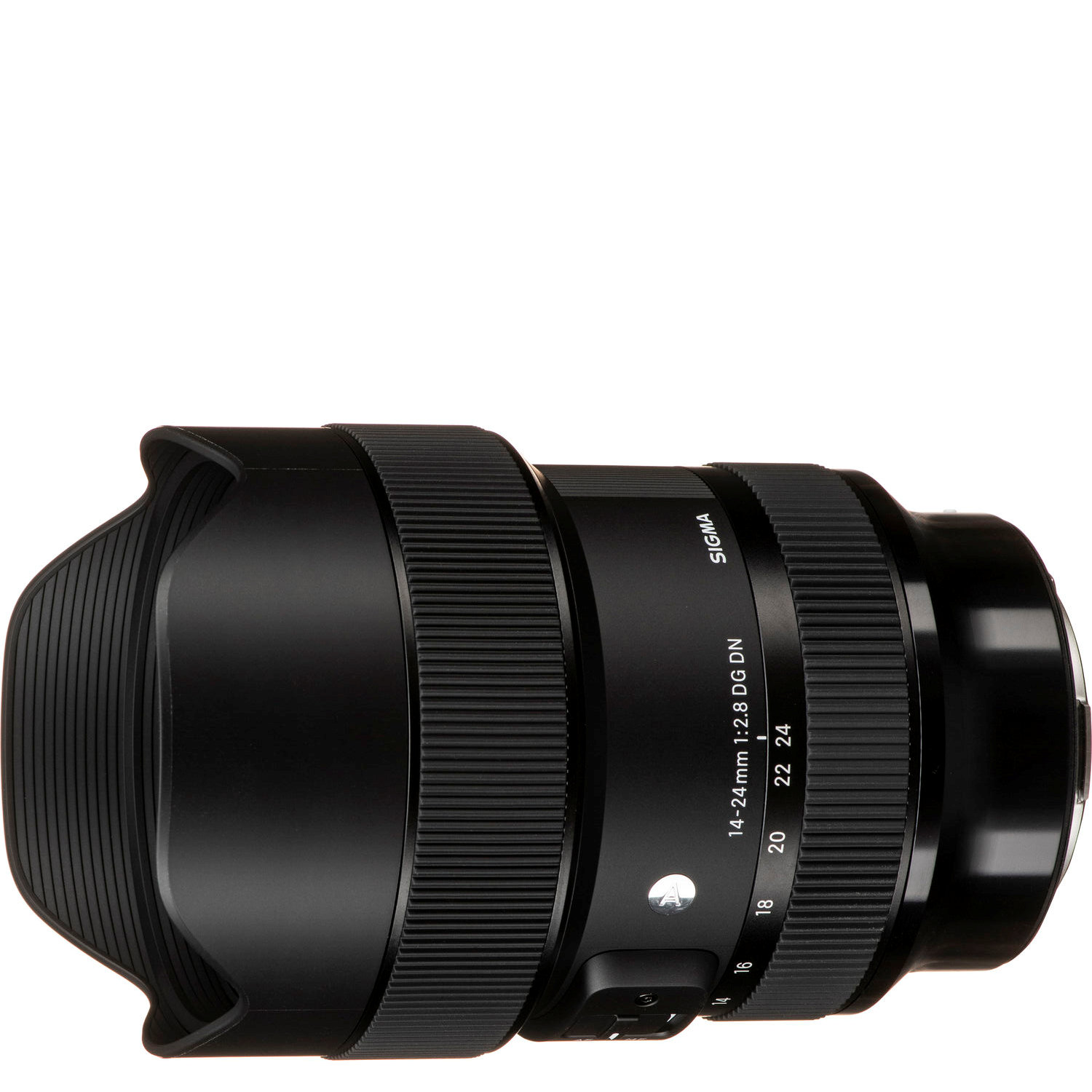
Typical of ‘trinity’ wide-angle zooms, this Sigma delivers a really expansive field of view at its shortest focal length, while stretching to 24mm where a standard zoom picks up the baton. I love this lens for everything from architectural interiors to cityscapes and sweeping landscape vistas. It’s a must-have zoom.
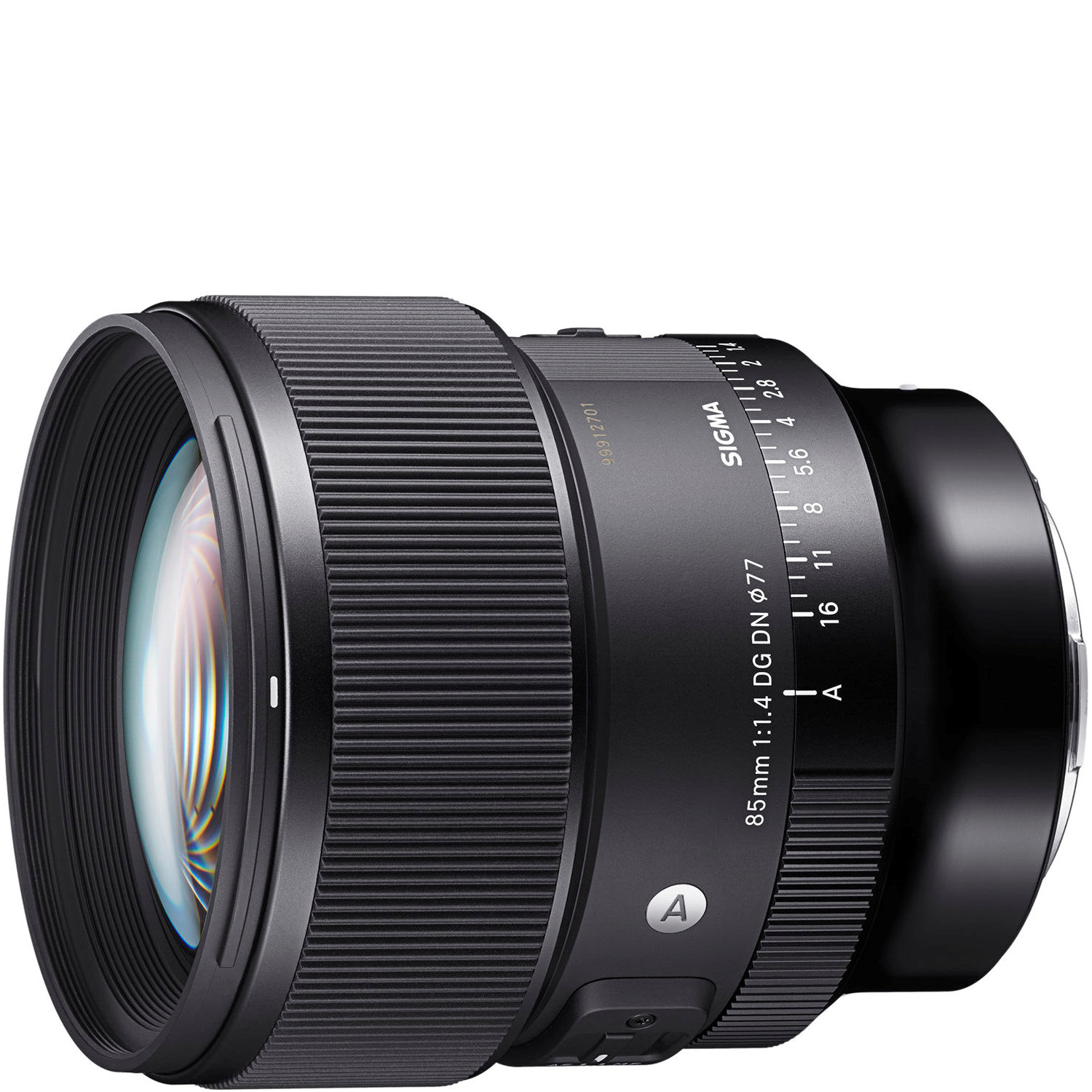
I find the 85mm focal length perfect for head-and-shoulders and half-length portraiture. As a short telephoto, it gives a flattering perspective and enables a natural shooting distance, so I can be close enough to engage with portrait subjects without invading their personal space. The f/1.4 aperture is great for isolating subjects.
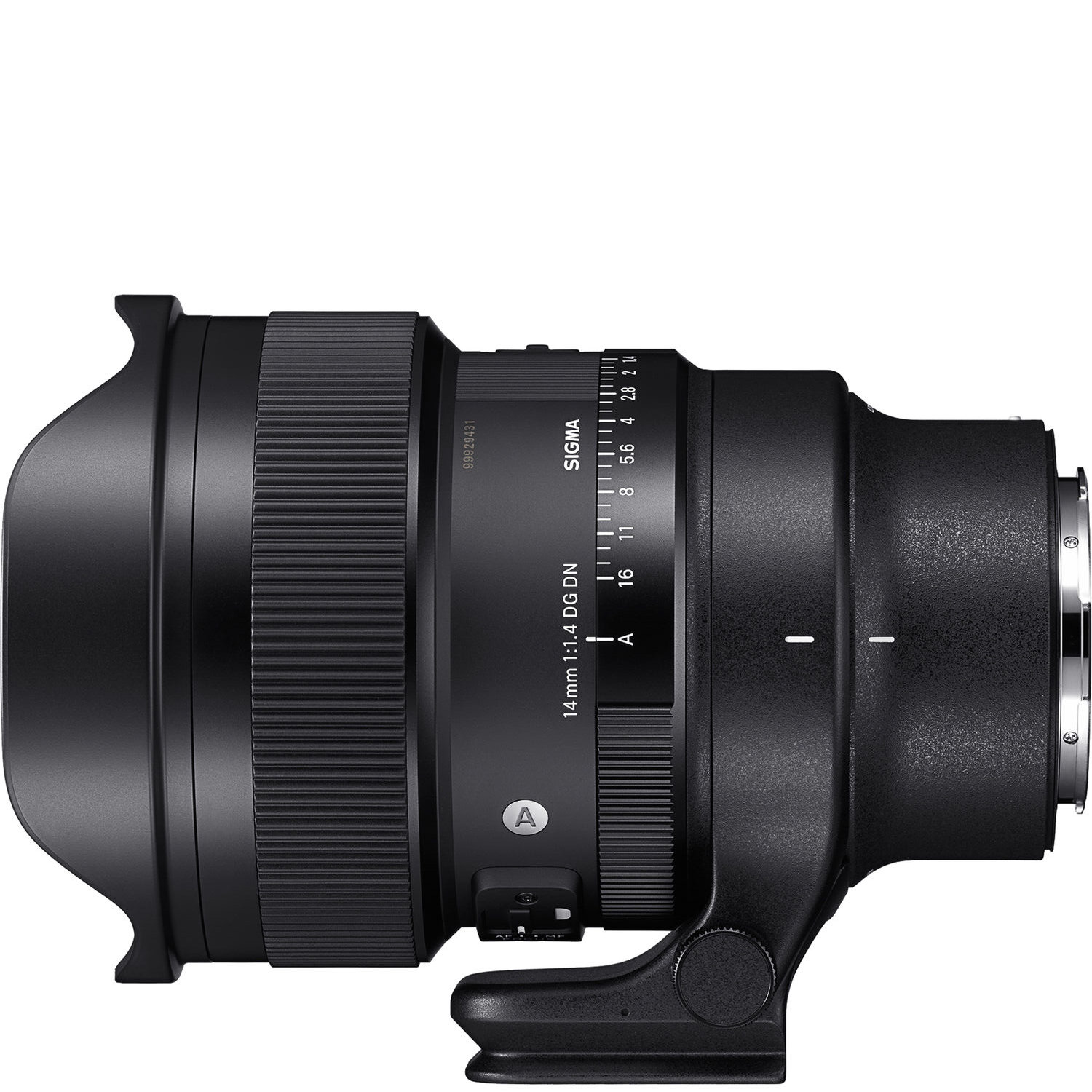
The main attraction of this lens is that it combines a really wide viewing angle with a fast f/1.4 aperture. I find it massively versatile, not only covering the angles for a really wide field of view, but also delivering outstanding performance for the likes of nighttime cityscapes and astrophotography under a clear night sky.
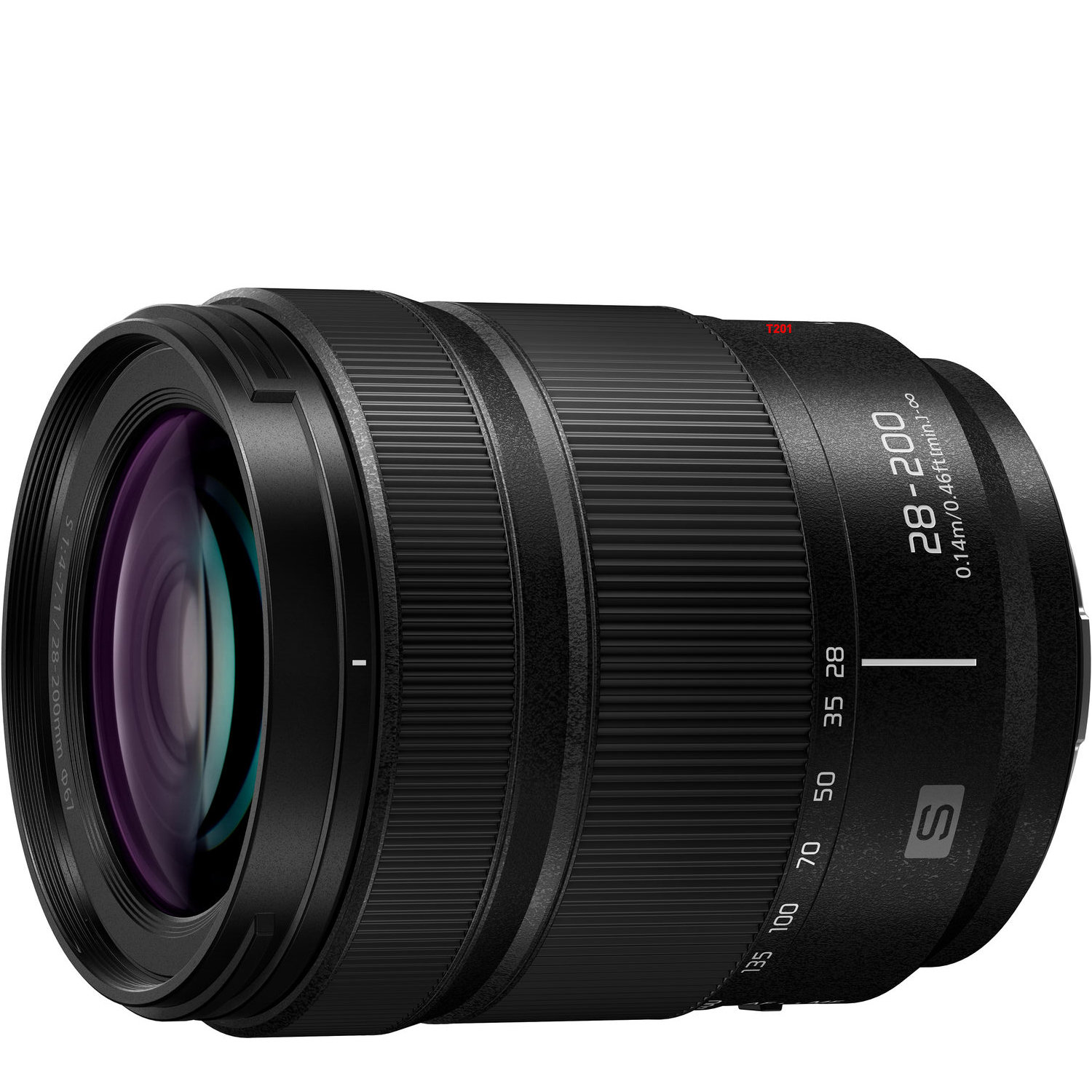
Whether I’m pounding city streets, trekking into the wilds or flying to foreign climes, I like to travel light. This outstanding ‘superzoom’ lens from Panasonic covers all the bases from wide-angle to telephoto focal lengths, so I can carry a single lens mounted to my camera and leave my gadget bag behind.
Load the full list...
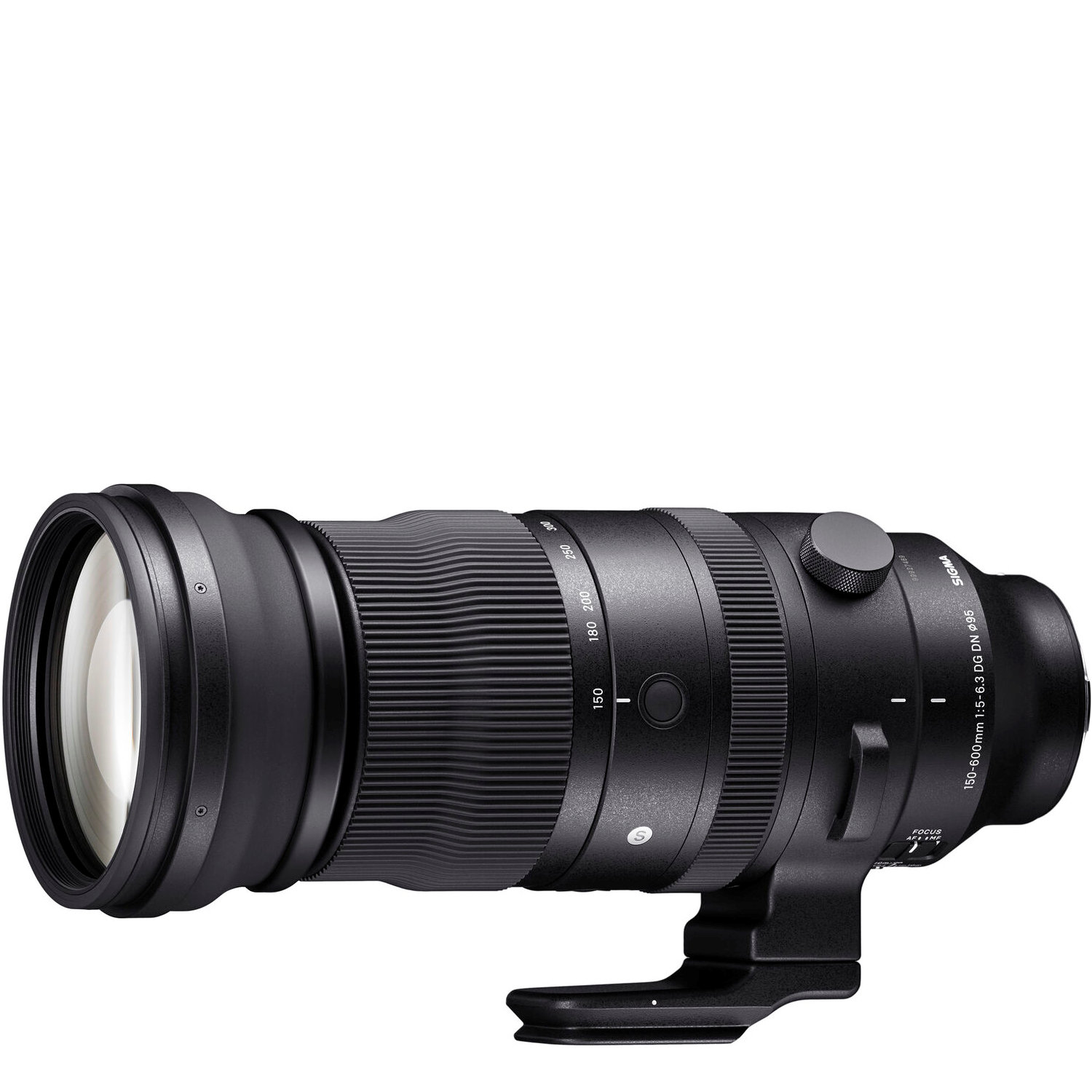
For action, sports and wildlife photography, this 150-600mm super-telephoto zoom really covers the distance. In all these scenarios, I often can’t get as close to subjects as I’d ideally like to, so this lens makes up the difference. Performance is excellent and it’s less weighty than the older DSLR version.
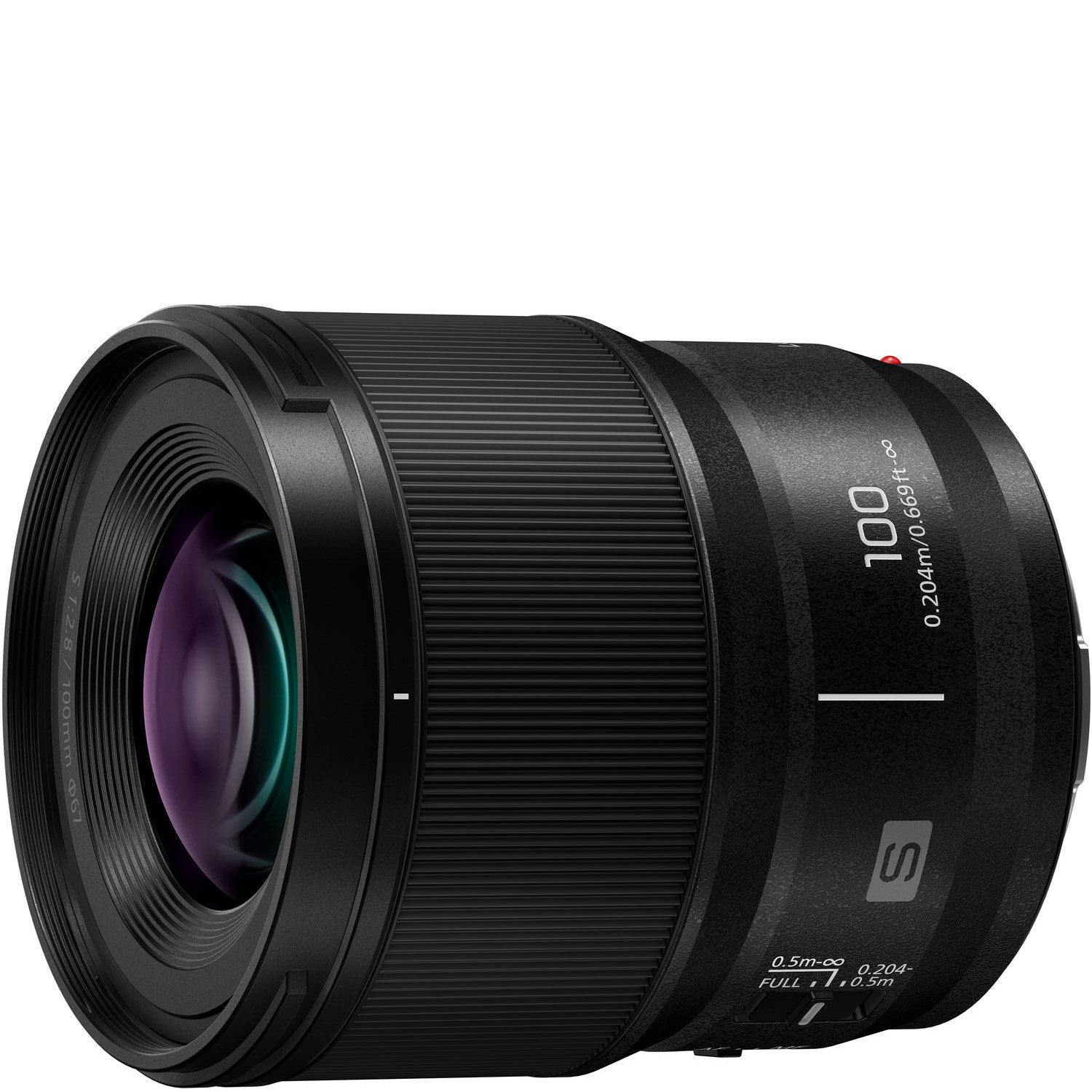
For something different, macro photography is a unique delight. This lens is conveniently compact yet reveals ultra-fine levels of tiny detail, all but invisible to the naked eye, thanks to its full 1.0x maximum magnification. Handling is excellent, making the lens a real joy to use with any L-mount camera.
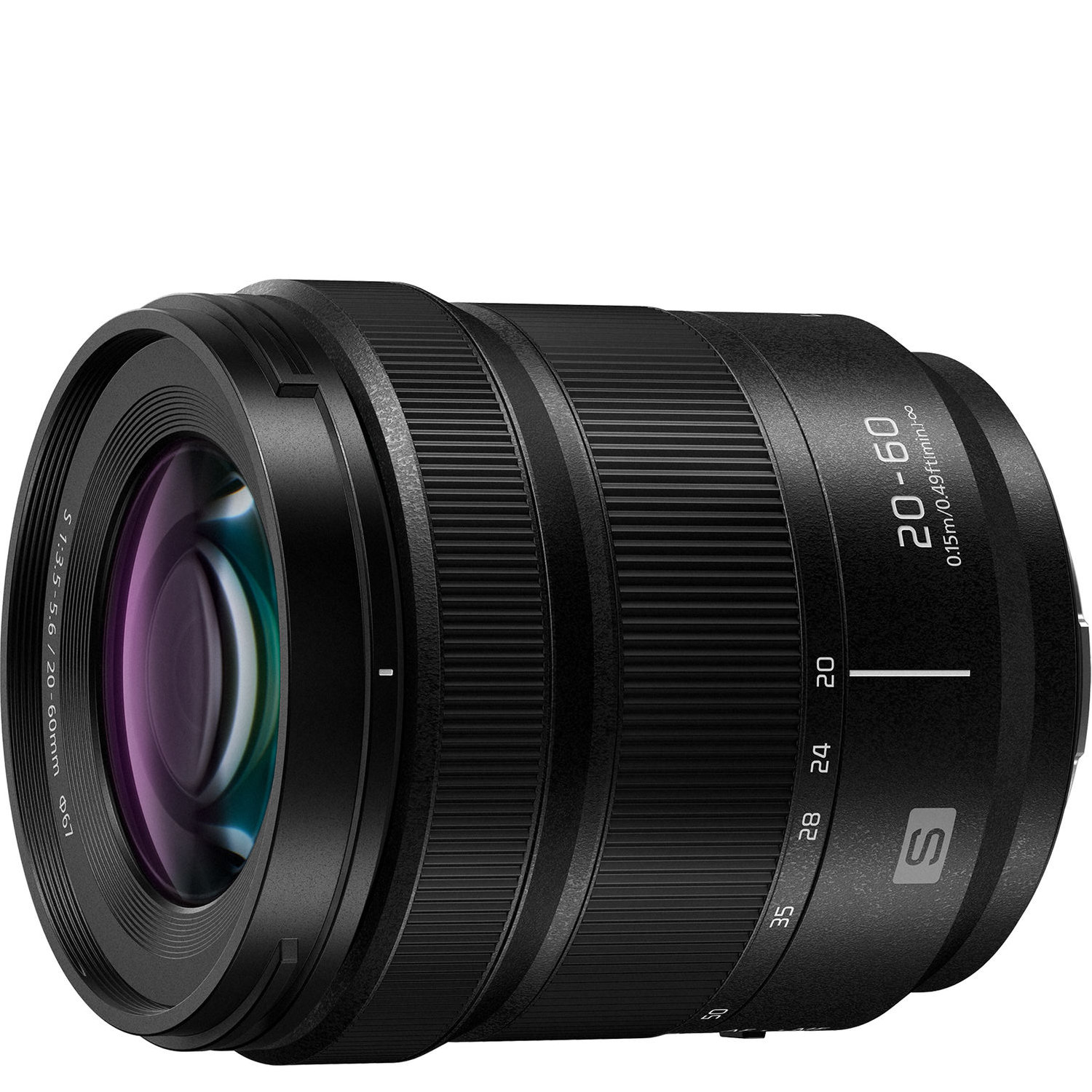
There’s arguably nothing to beat the versatility of a standard zoom lens, but I often feel a bit short-changed when it comes to wide-angle coverage. This lens shaves a bit off the usual telephoto reach but I love the extra-wide maximum viewing angle. It’s also standout value for money at the price.
The best L-mount lenses
Why you can trust Digital Camera World
Best standard zoom
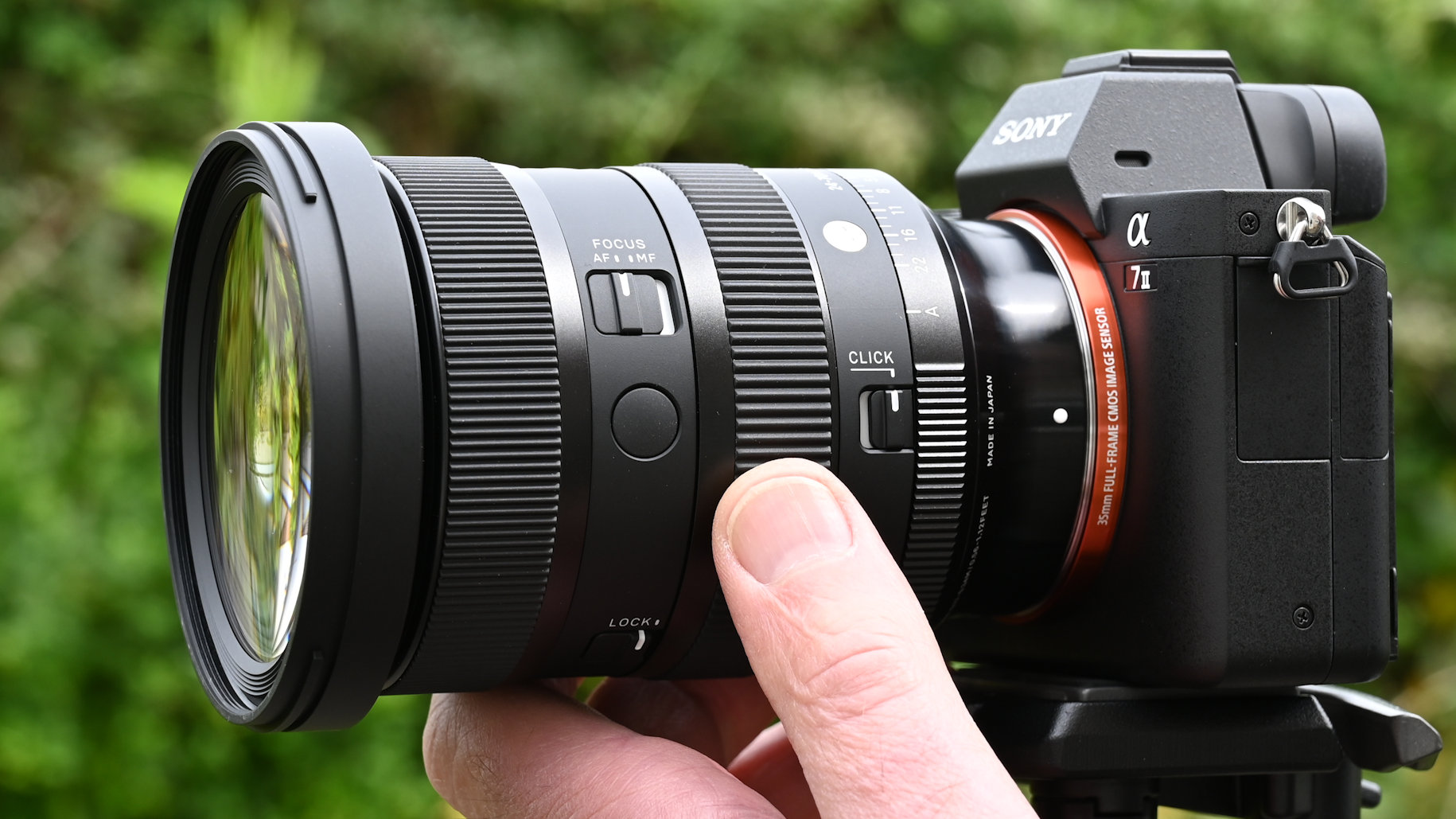
Specifications
Reasons to buy
Reasons to avoid
✅ You want the very best in image quality from a standard zoom lens.
✅ You like zoom lenses that have a fast and constant f/2.8 aperture.
✅ You enjoy having a lens with a click/de-click aperture control ring.
❌ You’d rather have a more compact, lightweight standard zoom.
❌ You prefer shooting with even faster prime lenses rather than zooms.
❌ You’d like a lens that has a focus distance scale.
The DSLR version of Sigma’s 24-70mm F2.8 Art standard zoom was my go-to lens for several years, before I went mirrorless. The redesigned edition of the lens for mirrorless cameras was excellent but this Mark II version of the L-mount zoom takes everything up an extra notch. I like that it’s easily manageable for an ‘everyday’ lens, weighing in at 735g. That’s 100g lighter than the previous edition, and considerably lighter than the 1.020g DSLR forebear. Even so, it packs a host of handling exotica including an aperture control ring with an ‘Auto’ position locking switch, plus a click/de-click switch for stills and video respectively, plus two independently customizable function buttons. A zoom lock switch is featured for good measure, to avoid any unwanted zoom creep, as the inner barrel does extend at longer focal lengths.
When it comes to performance, the optical path is redesigned for greater sharpness and clarity, right out to the edges and corners of the image frame. I found sharpness to be excellent, and the quality of bokeh is nice and soft as well. I like that bokeh disks remain well-rounded when stopping down a little, helped by an 11-blade aperture diaphragm. Sigma claims a 3x increase in autofocus speed in the Mark II, and I certainly found it to be snappy and well able to track moving subjects.
Not just a great performer that’s really nicely built with extensive weather-seals, the Sigma is also excellent value at the price, only costing around a third to half as much to buy, compared with other camera manufacturers’ competing lenses.
Read more: Sigma 24-70mm F2.8 DG DN II Art review
Features | Advanced features include a click/de-click aperture ring and two Fn buttons. | ★★★★★ |
Design | The Mark II sheds a little weight while enhancing autofocus speed and quality. | ★★★★★ |
Performance | Fast and consistently accurate autofocus teams up with excellent image quality. | ★★★★★ |
Value | Compared with own-brand ‘trinity’ standard zooms, the Sigma Mark II is bargain. | ★★★★★ |
Best standard prime
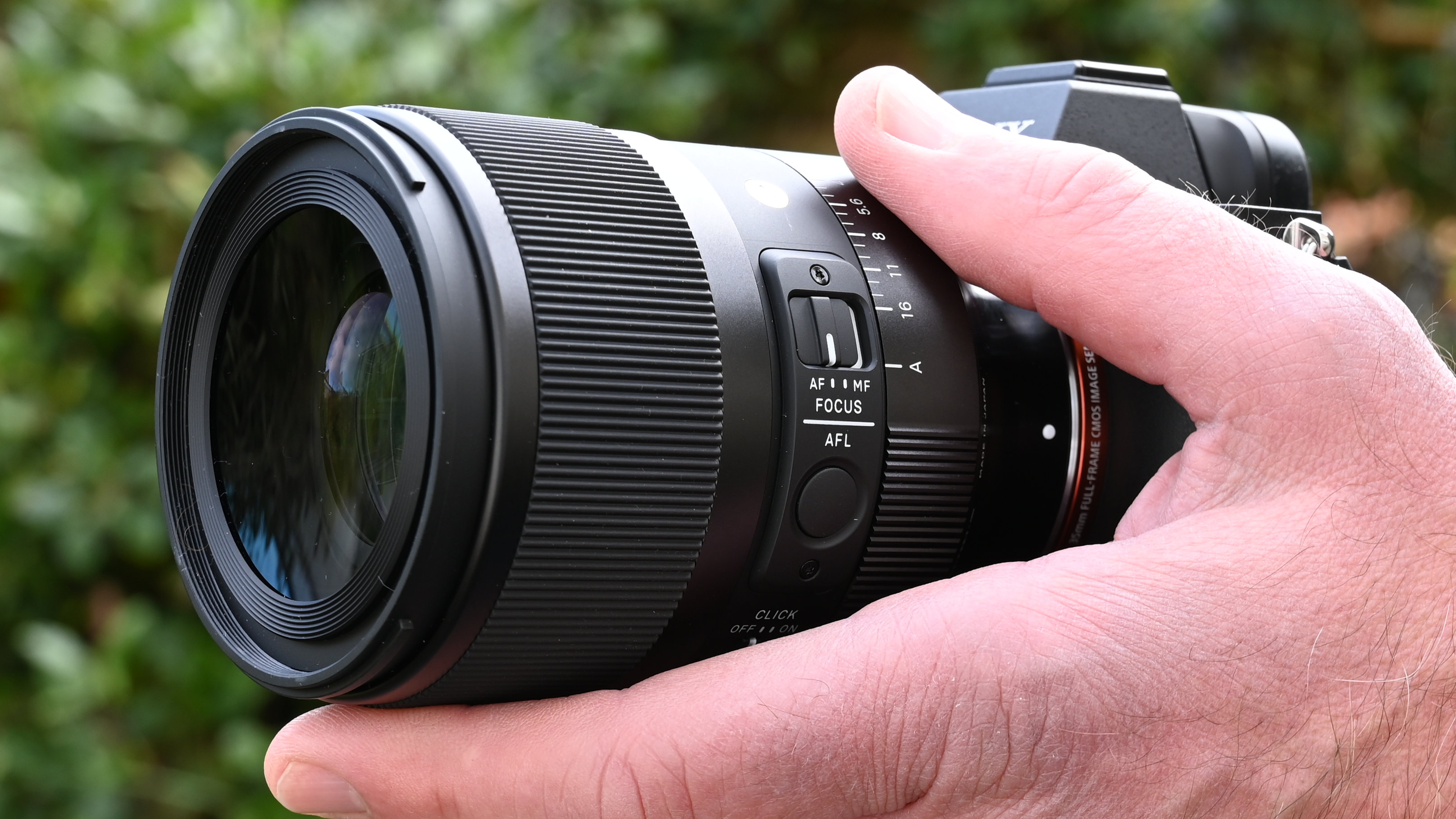
Specifications
Reasons to buy
Reasons to avoid
✅ You’d like fast shutter speeds for freezing motion under very low lighting, without having to bump up your camera’s ISO setting.
✅ You feel the need for speed. It’s a whole f/stop faster than an f/1.8 prime and a third of a stop faster than an f/1.4 lens.
✅ You want a really tight depth of field for isolating the key point of a subject against the background.
❌ You’d rather have a more compact, lightweight standard prime lens.
❌ You feel that an f/1.4 or f/1.8 prime lens is fast enough for your needs.
I don’t always feel that faster is better. Sometimes I prefer a relatively lightweight option and don’t mind sacrificing a bit of speed in terms of aperture rating. Even so, the sheer quality of this lens is enough to sway me. It combines superb sharpness and clarity, along with beautiful bokeh thanks to a really tight depth of field. And best of all, it’s reasonably compact, lightweight and affordable for a super-fast f/1.2 prime, only costing about half the price of some 50mm f/1.2 lenses from other manufacturers.
Despite the downsized price tag, I love that the lens is beautifully built and impeccably turned out. There’s no shortage of hands-on controls either, with an aperture ring that comes complete with a click/de-click switch and a customizable AF-Lock button. For physical downsizing, as well as to enhance image quality, the lens features four high-precision aspherical elements and further elements with a high refractive index. I like that, for such a fast lens, axial chromatic aberration (or bokeh fringing) is negligeable. I’m also impressed that the quality of bokeh remains excellent when stopping down a little, thanks to a particularly well-rounded 13-blade aperture diaphragm.
Read more: Sigma 50mm F1.2 DG DN Art review
Features | Top-end features include dual HLA autofocus motors for fast focusing. | ★★★★★ |
Design | The clever design manages to shoehorn a super-fast f/1.2 aperture into a manageable package. | ★★★★★ |
Performance | Performance is absolutely excellent in all respects. | ★★★★★ |
Value | It’s an undeniably pricey lens but greatly undercuts most direct competitors. | ★★★★★ |
Best wide-angle zoom
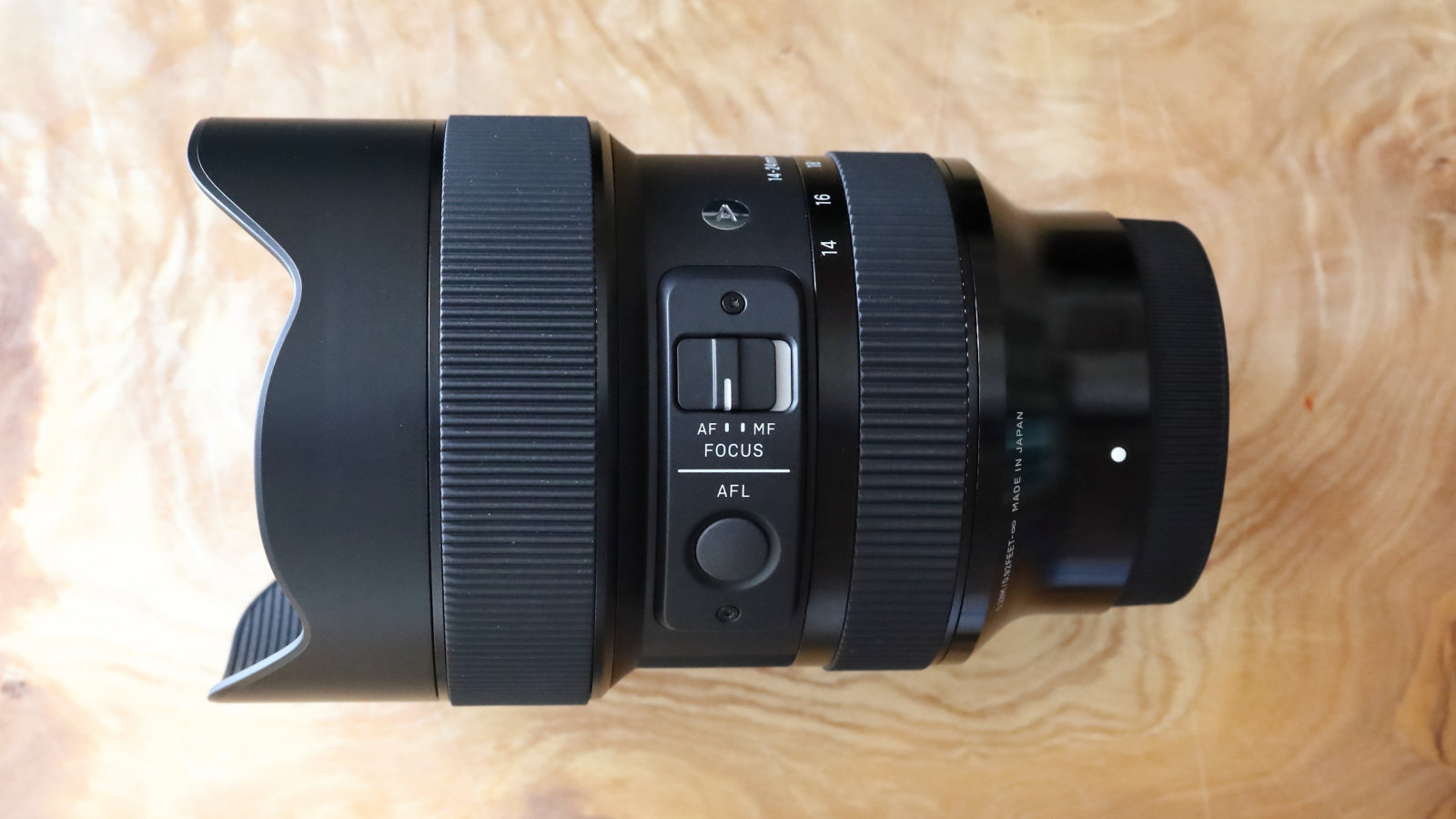
Specifications
Reasons to buy
Reasons to avoid
✅ You want really expansive viewing angles with the versatility of a zoom rather than prime lens.
✅ You’d like a zoom lens with a fairly fast and constant f/2.8 aperture.
❌ You’d prefer a wide-angle lens that has a front filter thread, especially useful for the likes of ND Grad filters in landscape photography.
❌ You’d rather have an even faster aperture rating, ideal for astrophotography and other low-light scenarios, in which case you’d be better off with a wide-angle prime lens.
Starting with the back end of the lens, just for a change, I like that this one not only features Sigma’s usual weather-sealed plated brass mounting plate, but that the plate includes a slot for inserting gel filters, complete with a locking mechanism to keep it in place. The downside is that, like most ultra-wide-angle prime and zoom lenses, it has an integral hood to protect the protruding front glass element, which means that there’s no front filter attachment thread. That’s par for the course.
The optical path of the older lens has three top-grade FLD (‘Fluorite’ Low Dispersion) elements and three SLD (Special Low Dispersion) elements, along with three aspherical elements. I like that top-quality glass includes three aspherical elements, including an ultra-high-precision, large-diameter one at the front, along with five SLD (Special Low Dispersion) elements and one FLD (‘Fluorite’ Low dispersion’ element.
The net result is excellent sharpness and clarity, with a minimum of unwanted aberrations. The application of NPC (Nano Porous Coating) as well as Sigma’s more conventional Multi-Layer Coating team up well to minimize ghosting and flare. I found that the lens relies quite heavily on automatic in-camera correction for distortion but that’s becoming the norm for many recent lenses designed for mirrorless cameras, especially the wide-angle variety.
Read more: Sigma 14-24mm F2.8 DG DN Art review
Features | There’s no aperture control ring but the lens does feature a customizable function button. | ★★★★ |
Design | It’s quite compact and lightweight for a full-frame compatible f/2.8 ultra-wide zoom. | ★★★★★ |
Performance | From fast autofocus to excellent image quality, the lens is a great performer. | ★★★★★ |
Value | It’s pricier than Sigma’s companion 24-70mm f/2.8 standard zoom but still great value. | ★★★★★ |
Best lens for portraits
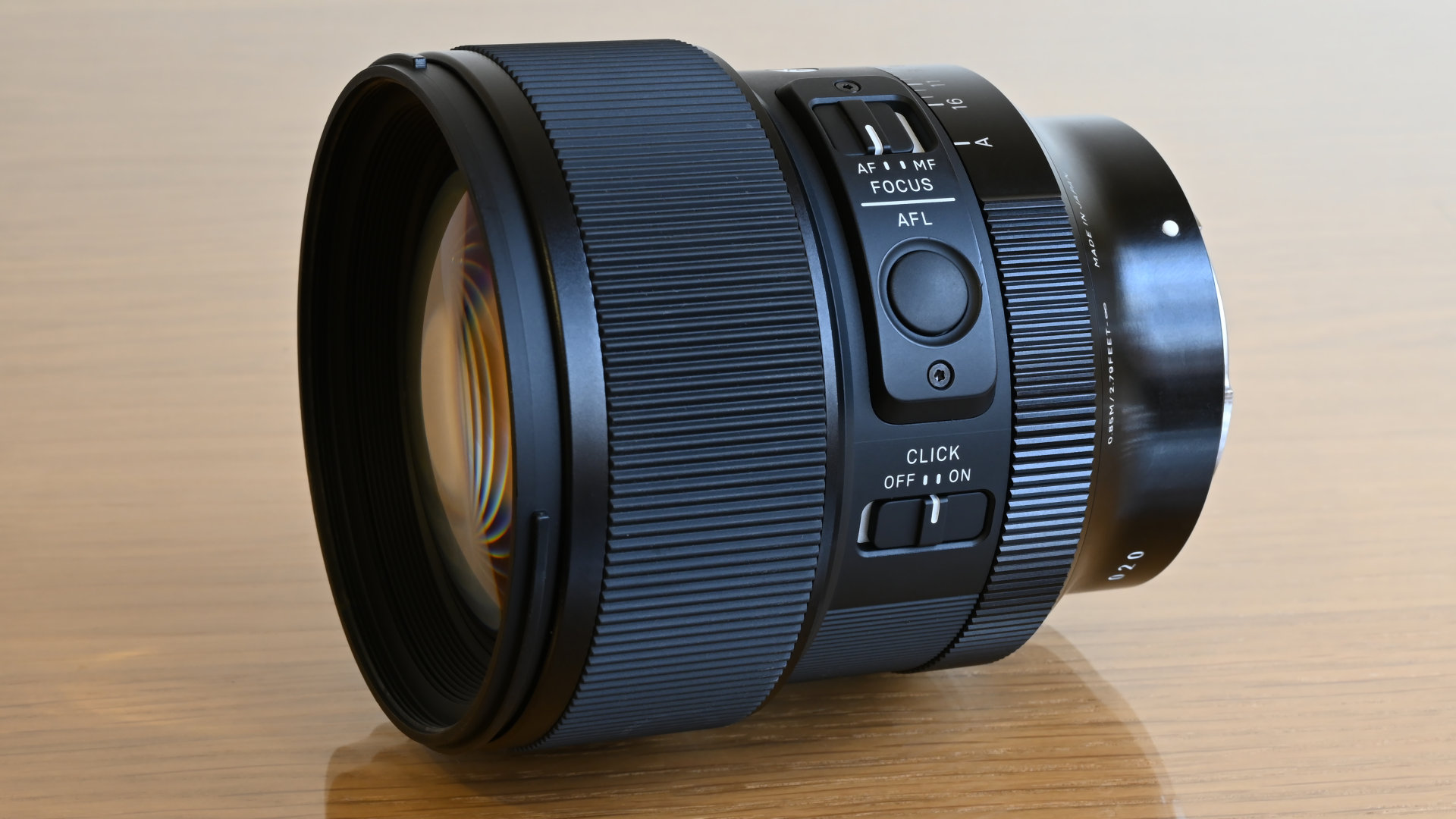
Specifications
Reasons to buy
Reasons to avoid
✅ You want a fast prime with an ideal focal length for portraiture.
✅ You like sharpness where it matters, along with beautiful smooth bokeh.
✅ You want a lens that can isolate the main subject by blurring the background.
❌ You prefer taking ‘environmental portraits’ that include the surroundings, where a shorter focal length would be better.
❌ You take portraits at weddings and events, where a 70-200mm f/2.8 lens offers zooming versatility.
I was always very fond of my Sigma 85mm f/1.4 Art lens for DSLRs and it was adapted for Sony mirrorless cameras. The newer L-mount version (also available in E-mount) was completely redesigned from scratch. It sheds size and weight, and I like that it only weights 630g, compared with the 1,130g of the original. Despite this, it gains useful onboard controls including a customizable function button and an aperture control ring, complete with click/de-click switch.
Even so, the standout feature for me is the high-grade optical design that includes five SLD (Special Low Dispersion) elements and four high-refractive-index elements. I find that, even shooting wide-open at f/1.4, the lens delivers exceptional sharpness and clarity, with minimal aberrations. The only exceptions are that vignetting and distortion can be a little noticeable without automatic in-camera corrections. I actually find that vignetting can add a nice creative element in portraiture, so I’m not bothered on that front.
For portraiture, I find that the quality of bokeh can be every bit as important as sharpness. The lens does really well here, and rather better than the original DSLR lens, delivering sumptuously smooth bokeh.
Read more: Sigma 85mm F1.4 DG DN Art review
Features | Smart features include an aperture control ring and customizable AF-Hold button. | ★★★★★ |
Design | Sigma did well to reduce the size and weight of the older DSLR lens, more in keeping with mirrorless cameras. | ★★★★★ |
Performance | From fast autofocus to superb sharpness and wonderfully smooth bokeh, the lens is a top performer. | ★★★★★ |
Value | Considering the build quality, image quality and all-round performance, it’s great value at the price. | ★★★★★ |
Best wide-angle prime
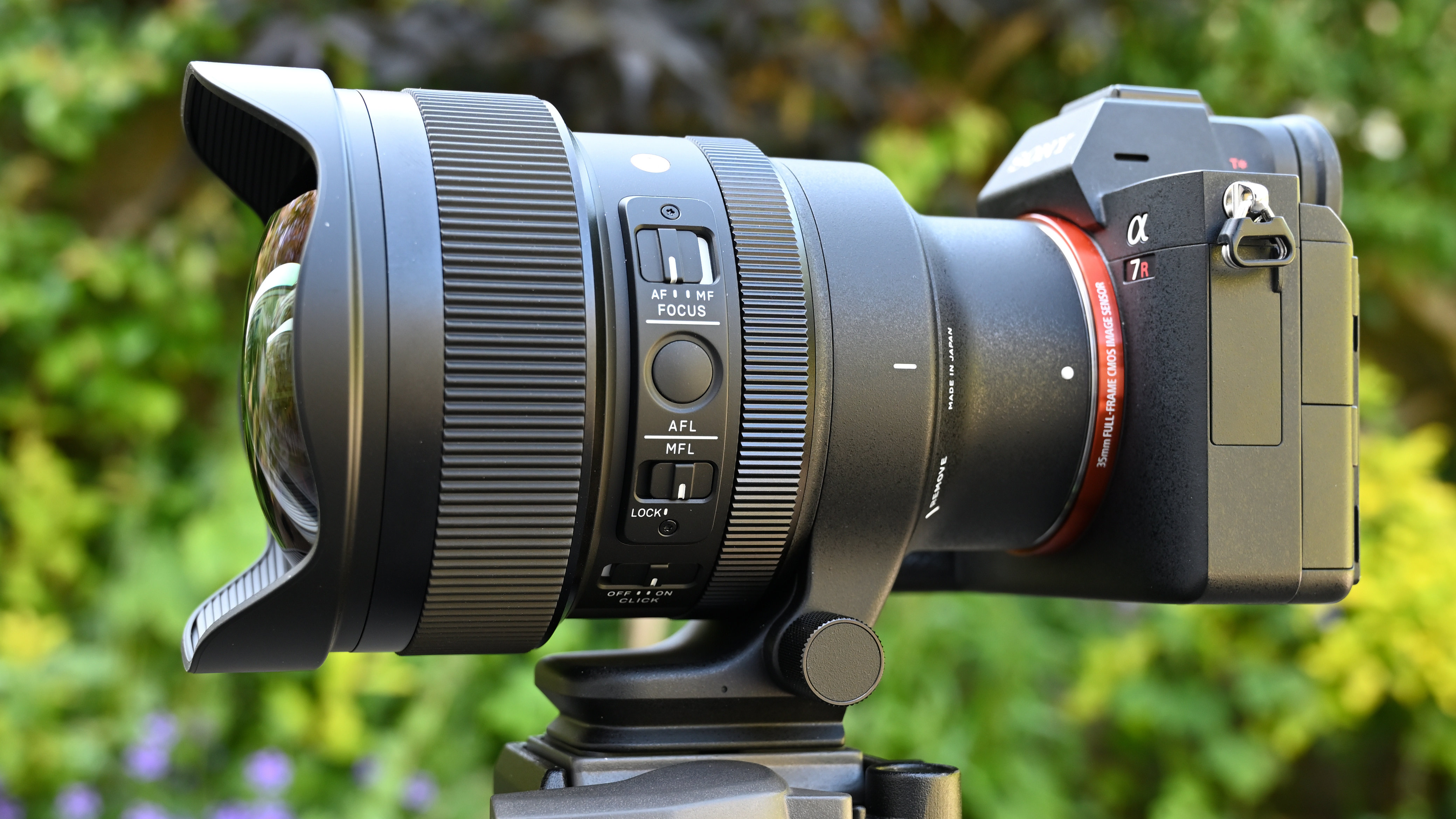
Specifications
Reasons to buy
Reasons to avoid
✅ You want a really wide-angle lens with a fast aperture, particularly useful for astrophotography.
✅ You’re after an ultra-wide-angle lens with excellent sharpness right out to the edges and corners of the image frame.
❌ You’d prefer the versatility of a zoom lens rather than ‘zooming with your feet’, which isn’t always viable in ultra-wide-angle shooting.
❌ You’re rather have a lens that’s more compact and lightweight, and don’t feel the need for such a fast aperture rating.
I do like a starry night but, for astrophotography, I want a really wide-angle lens that sucks in much light as possible. This Sigma launched as the world’s first ultra-wide-angle 14mm lens with an f/1.4 aperture. I like that it delivers 58 per cent more light to the camera’s image sensor than an f/1.8 lens. But astrophotography certainly isn’t the only application for the lens. I find it’s also great for shooting landscapes, cityscapes and architectural interiors, delivering scintillating image quality. That’s backed up by superb handling characteristics and excellent build quality.
Indeed, typical of many Sigma Art L-mount lenses, this one comes complete with an aperture control ring that has switchable click/de-click options as well as a switch to lock it in its Auto position for camera-driven control. There’s also a handy AF-Lock button, that can be customized for other functions.
By necessity, it’s a bit of a beast, weighing in at more than a kilogram, but that’s entirely necessary when combining such a wide viewing perspective with such a fast aperture. Like most ultra-wide-angle lenses, this one has an integral hood that precludes a filter attachment thread. As the next best thing, however, there’s a rear slot for fitting pre-cut gel filters.
Read more: Sigma 14mm F1.4 DG DN Art review
Features | 14mm at f/1.4 is the key feature but there’s plenty of handling exotica to go with it. | ★★★★★ |
Design | The design is necessarily large-scale but the design is excellent, right down to the filter slot at the rear. | ★★★★★ |
Performance | Performance is absolutely stellar, from fast and consistently accurate autofocus to image quality. | ★★★★★ |
Value | The lens is standout value, considering its large-diameter, high-precision glass elements. | ★★★★★ |
Best lens for travel
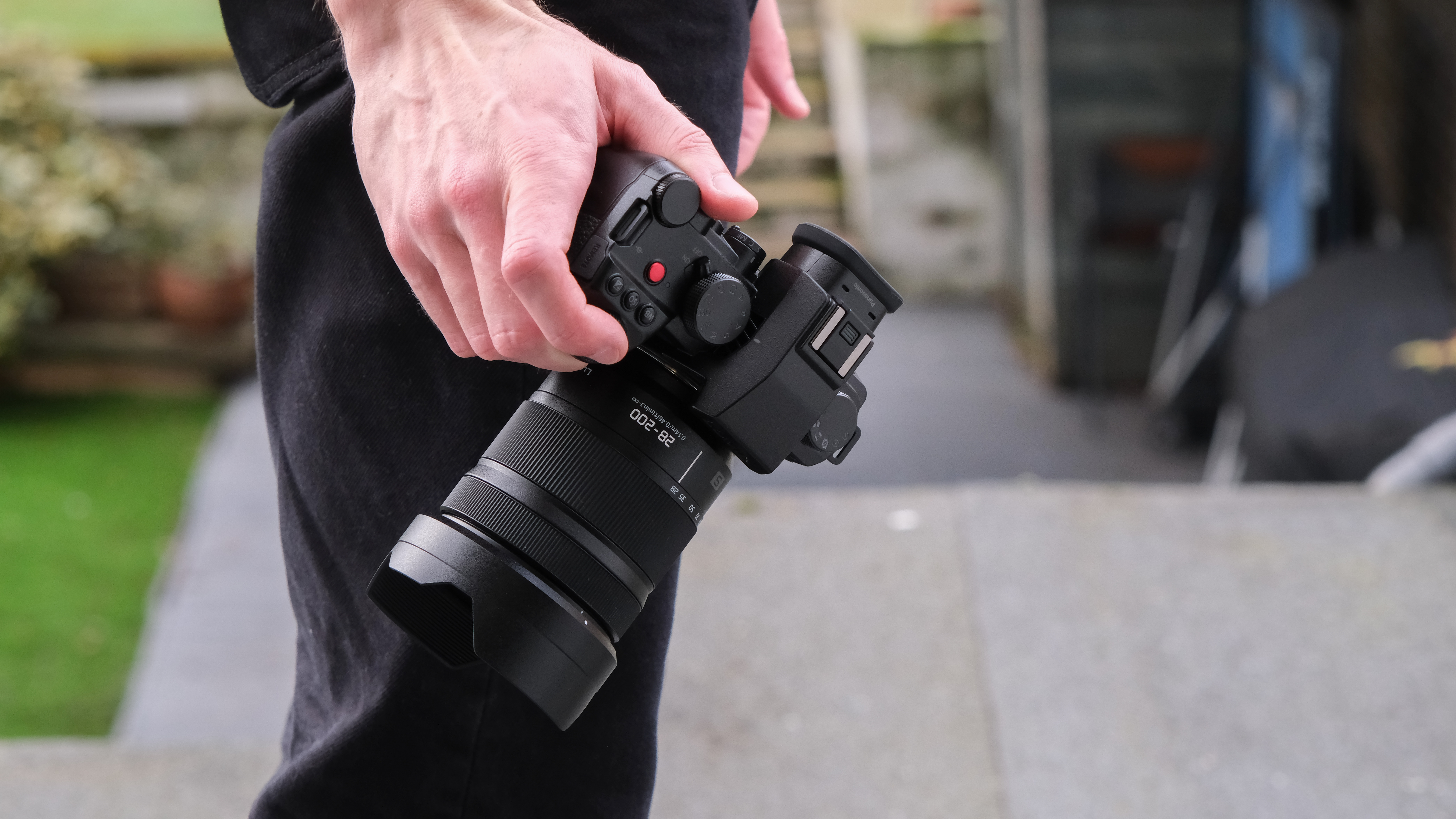
6. Panasonic Lumix S 28-200mm F4-7.1 Macro O.I.S.
Specifications
Reasons to buy
Reasons to avoid
✅ You want an all-purpose zoom lens that’s really convenient for travel and walkabout photography.
✅ You appreciate compactness and a lightweight yet extensively weather-sealed build.
❌ You prefer edge-to-edge sharpness from a lens, rather than convenience. Superzooms typically come with this compromise.
❌ You’d rather have a ‘faster’ lens, the aperture of this one shrinks to f/7.1 at the long end of its zoom range.
When I’m on my travels, the last thing I want is to be weighed down (and give a lot of space to) a big bag of extra lenses. The 28-200mm zoom range of this Panasonic lens covers everything from a fairly wide-angle perspective to good telephoto reach, at the twist of a ring. Mounted on a camera body, it gives me endless versatility for almost any shooting scenario. Better still, it avoids the risk of missing definitive moments when action is unfolding due to swapping between different lenses at the time.
So-called superzoom lenses can sometimes feel a bit super-sized but I like that this is the smallest and lightest of the breed, at least for full-frame cameras. Indeed, it only weighs 413g or less than a pound. Even so, it packs some useful features including optical image stabilization and even a 0.5x macro facility at the short end of the zoom range.
I found the lens to be impressively sharp for a superzoom, at least in the central area of the image frame. Out to the edges and corners, sharpness drops off a bit but I’m used to that with superzooms. In practical terms, sharpness is boosted by the highly effective optical image stabilization system, which teams up well with IBIS (In Body Image Stabilization) where featured in cameras.
Read more: Panasonic Lumix S 28-200mm F4-7.1 Macro O.I.S. review
Features | It’s pretty basic but the lens does feature AF/MF and OIS on/off switches. | ★★★★ |
Design | Panasonic has done well to pack such a generous zoom range into such a compact lens. | ★★★★★ |
Performance | Performance is very impressive for a superzoom lens although edge-sharpness could be better. | ★★★★ |
Value | It’s great value at the price, especially as it can act as a substitute for two regular zoom lenses. | ★★★★★ |
Best for sports/wildlife

Specifications
Reasons to buy
Reasons to avoid
✅ You want powerful telephoto reach for action, sports and wildlife photography.
✅ You like the versatility of a generous zoom range, rather than the limitations of a prime lens.
❌ You’re averse to big, heavy lenses. This one physically extends considerably through the zoom range and weighs over 2kg.
❌ You need a faster aperture than the f/6.3 that this lens features at the long end of its zoom range.
I was always very fond of the Sigma 150-600mm Sports lens for DSLRs, with the exception that I found its weight of about 2.8kg made it uncomfortable for prolonged handheld shooting. The newer L-mount edition shrinks the weight down to 2.1kg, making it a more attractive proposition in this respect, but it still packs many of the features that I like. These include an autofocus range limiter than can lock out either the short or long end, switchable dual-mode optical stabilization for static and panning shots, with 4-stop performance, and two switchable ‘custom’ modes, which I can set up with Sigma’s optional L-mount USB Dock. This enables fine-tuning the likes of autofocus speed and how visible the effect of stabilization is in the viewfinder (or rear screen preview).
The up-market optical design includes 25 elements arranged in 15 groups, including four top-grade FLD (‘Fluorite’ Low Dispersion) elements and two SLD (Special Low Dispersion) elements to enhance clarity and minimize aberrations. Super Multi-Layer Coating is applied to reduce flare and ghosting, and the front element has a fluorine coating to repel moisture and grease. The optical layout is designed to cater to cameras with even the most high-resolution image sensors.
One addition that I particularly like in the L-mount edition is the ‘Zoom Torque’ adjustment, which gives the option of keeping the zoom ring fairly stiff or allowing for free and easy movement.
Read more: Sigma 150-600mm F5-6.3 DG DN OS Sports review
Features | It’s a feature-packed lens with lots of fast-action switches for quick and easy adjustments. | ★★★★★ |
Design | The design is very refined, tough and weather-sealed, but the tripod mounting ring can’t be removed. | ★★★★ |
Performance | With fast autofocus, effective optical stabilization and great image quality, it’s a star performer. | ★★★★★ |
Value | The lens is incredibly great value at the price, given the cost of many super-telephoto lenses. | ★★★★★ |
Best macro lens

Specifications
Reasons to buy
Reasons to avoid
✅ You enjoy taking extreme close-ups of bugs and other tiny objects in incredible detail.
✅ You want a full macro lens that’s unusually compact and lightweight but still has the usual f/2.8 aperture.
❌ You’d prefer the even greater magnification offered by some recent macro lenses.
❌ You’d rather have a macro lens which has a tripod mounting ring for enhanced balance.
I don’t like to cart around more weight than I need to, so I’m impressed that, at 300g, this Panasonic is the most lightweight 100mm autofocus macro lens on the market. Part of the weight-saving is due to a new ‘Dual Phase’ linear stepping motor and the lack of optical stabilization, which doesn’t bother me as I find that stabilization is no real substitute for a tripod when shooting extreme close-ups at up to 1.0x magnification. That said, some of the latest macro lenses offer even more magnification, but full 1.0x is plenty for me. As such, the lens can reproduce small objects at full life size on the image sensor, giving the potential for incredible enlargement when viewing pictures in screen or in print.
There’s no aperture control ring nor customizable function buttons but I’m pleased that the lens features easy-access AF/MF focus mode and autofocus range limiter switches. The latter can lock out either the long or short end of the range, for macro close-up or regular photography. It’s particularly useful for macro shooting because, as usual, there can be some AF hunting at very short objective distances. Perhaps more importantly for serious macro photography, the electronically coupled manual focus ring operates with smooth precision.
Image quality is impressively sharp even when shooting wide-open at f/2.8. Importantly for when you’re trying to get anything more than a paper-thin depth of field in macro photography, sharpness remains very good even really narrow apertures, where diffraction can become a problem. Overall, it’s an excellent and easily manageable macro lens.
Read more: Panasonic Lumix S 100mm F2.8 Macro review
Features | It’s very good but lacks the oversized macro magnification or optical image stabilization of some competitors. | ★★★★ |
Design | It’s amazing that Panasonic has managed to shoehorn such an excellent macro lens into such a small build. | ★★★★★ |
Performance | The lens is able to resolve the finest of detail in macro shots and is useful as a short telephoto lens as well. | ★★★★★ |
Value | Considering the lack of an optical stabilizer and a few handling extras, it’s not outstanding value. | ★★★★ |
Best value lens
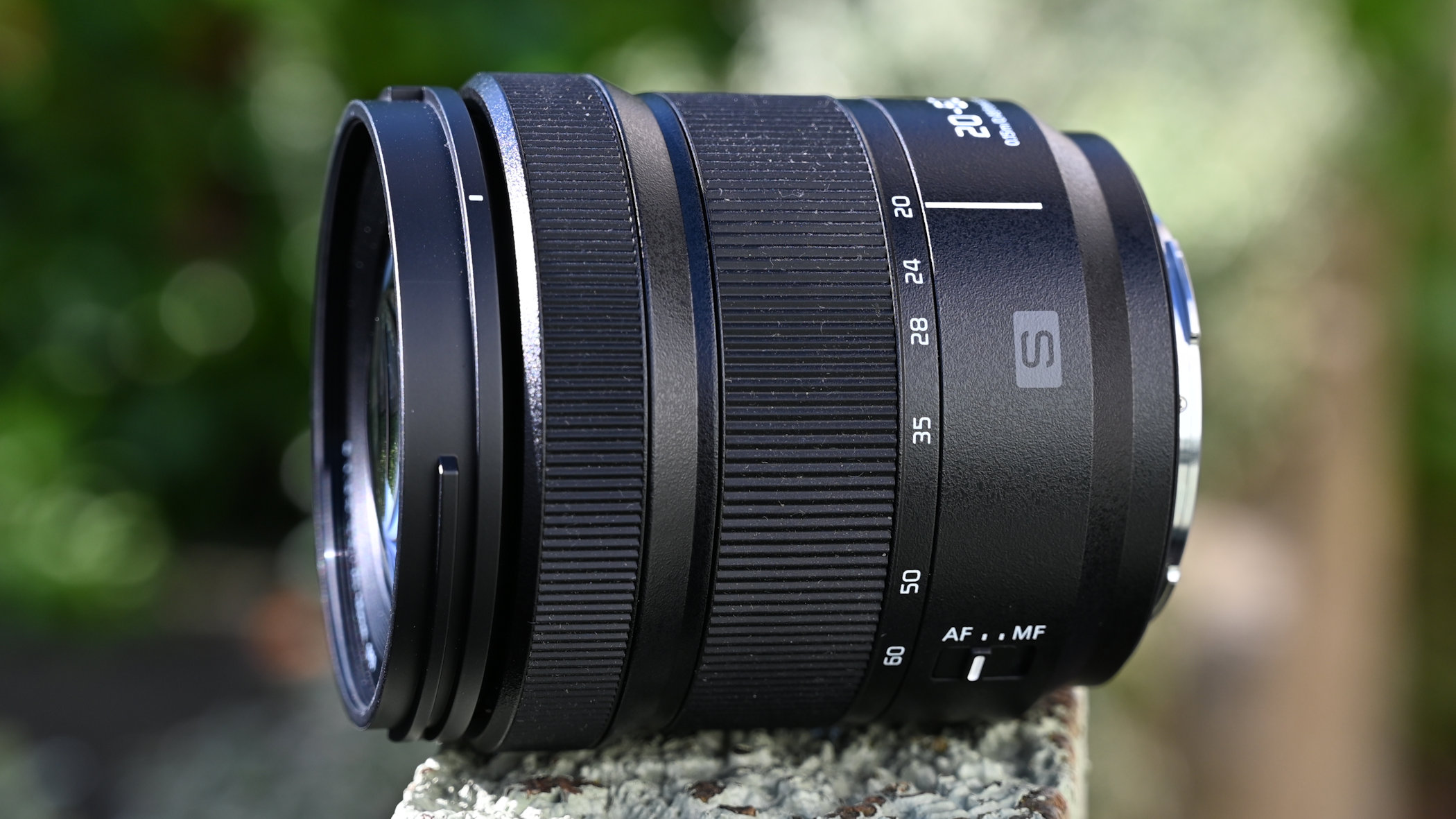
Specifications
Reasons to buy
Reasons to avoid
✅ You prefer extra wide-angle coverage to telephoto reach in a standard zoom lens.
✅ You like lenses that are compact, lightweight and great value for money.
❌ You’d rather have a ‘trinity’ standard zoom with a faster f/2.8 aperture that doesn’t shrink at longer zoom settings.
❌ You’re happy with the usual 24mm minimum focal length and would rather have a zoom that stretches to 70mm or more.
Some full-frame mirrorless cameras and lenses look and feel every bit as chunky as DSLRs, and that’s certainly true of Panasonic’s early launches. I love that this lens is properly compact and lightweight, tipping the scales at just 350g. That makes it ideal for walkabout photography and, even more of an attraction for me is that I often hanker after a wider viewing angle than a typical 24-70mm standard zoom can deliver. This 20-60mm lens goes seriously wider – put your eye to the camera’s viewfinder or rear screen and the difference is immediately and very much obvious. The flipside, naturally, is that you don’t get quite as much telephoto reach, and the lens only extends to a fairly ‘standard’ focal length, but I’m perfectly happy with that.
Unlike Panasonic’s larger and heavier 24-105mm and 24-70mm standard zooms, the 20-60mm has a variable aperture rating, which shrinks from f/3.5 to f/5.6 as you extend through the zoom range. I only really find that an issue if I’m shooting in Manual mode at wide apertures. Back on the plus side, the lens feels tough despite its lightweight build and features weather-seals. Up front, the filter thread is a modest 67mm and the lightweight petal shaped hood comes complete with a locking mechanism.
Helped by the inclusion of two aspherical elements, three ED (Extra-low Dispersion) elements and one UHR (Ultra High Refractive) element, image quality is very impressive. Sharpness and clarity are excellent throughout the entire zoom range, even when shooting at the widest available apertures. Helped by automatic corrections, color fringing and distortion are non-issue. All in all, this is a compact and inexpensive lens that punches well above its weight and price tag.
Read more: Panasonic LUMIX S 20-60mm F3.5-5.6 review
Features | In keeping with the small size and competitive price, the feature set isn’t extravagant. | ★★★★ |
Design | As I’d expect, the inner barrel extends at longer zoom settings but the lens remains compact. | ★★★★★ |
Performance | The wide-angle potential is a winner, especially as the lens deliver very good edge-to-edge sharpness. | ★★★★★ |
Value | At only about half the price of many lenses in this guide, it’s quite the bargain. | ★★★★★ |
How to choose
Do I need OIS?
Optical Image Stabilization can be really useful if your camera doesn’t feature IBIS (In-Body Image Stabilization). It’ll help counteract the effects of camera-shake and ensure you get sharp handheld shots more consistently with slow shutter speeds. IBIS tends to be less effective when shooting with telephoto lenses, so OIS is often featured in this type of lens regardless.
What’s the APS-C crop factor?
APS-C cameras have an image sensor that’s the same size as a frame of ‘Advanced Photographic System type C’ film. That’s somewhat smaller than a frame of 35m film, on which full-frame digital cameras are based. The outcome is that the ‘crop factor’ gives a 1.5x magnification in the focal length of lenses. For example, a 50mm lens will give the same field of view as using a 75mm lens on a full-frame camera.
How do I tell if a lens is full-frame compatible?
It can be tricky for the uninitiated to recognize the difference between L-mount lenses that are made for full-frame or APS-C format cameras. That said, Panasonic only makes full-frame L-mount cameras anyway. The clue is generally in the title. Sigma APS-C format lenses have a ‘DC’ suffix, whereas it’s ‘DG’ for full-frame compatible lenses. Bear in mind though, that you can shoot with Sigma’s DN lenses on full-frame cameras in crop mode, and with DG lenses on APS-C cameras with no limitations.
Zoom or prime?
Sometimes it’s hard to decide whether a zoom lens or a prime lens will be a better buy. Zoom lenses tend to be more versatile, as they cover a broad spread of focal lengths. However, there’s a lot to be said for the prime lenses, which generally have a wider or ‘faster’ aperture rating and are often relatively small and lightweight. 35mm, 50mm and 85mm prime lenses are particularly popular for street photography, general shooting and portraiture, respectively.
How we test
We test lenses using both real-world sample images and lab tests. Our lab tests are carried out scientifically in controlled conditions using the Imatest testing suite, which consists of custom charts and analysis software that measures resolution in line widths/picture height, a measurement widely used in lens and camera testing. Our lab tests also reveal the extent of color fringing and distortion. We find the combination of lab and real-word testing works best, as each reveals different qualities and characteristics. You can find out more about how we test and review on Digital Camera World.
Get the Digital Camera World Newsletter
The best camera deals, reviews, product advice, and unmissable photography news, direct to your inbox!
Matthew Richards is a photographer and journalist who has spent years using and reviewing all manner of photo gear. He is Digital Camera World's principal lens reviewer – and has tested more primes and zooms than most people have had hot dinners!
His expertise with equipment doesn’t end there, though. He is also an encyclopedia when it comes to all manner of cameras, camera holsters and bags, flashguns, tripods and heads, printers, papers and inks, and just about anything imaging-related.
In an earlier life he was a broadcast engineer at the BBC, as well as a former editor of PC Guide.
